

Education System in British India, History, Development and Impact
This article has all the details about Education system in British India. Read all the details about Education system in British India for UPSC Preparations.
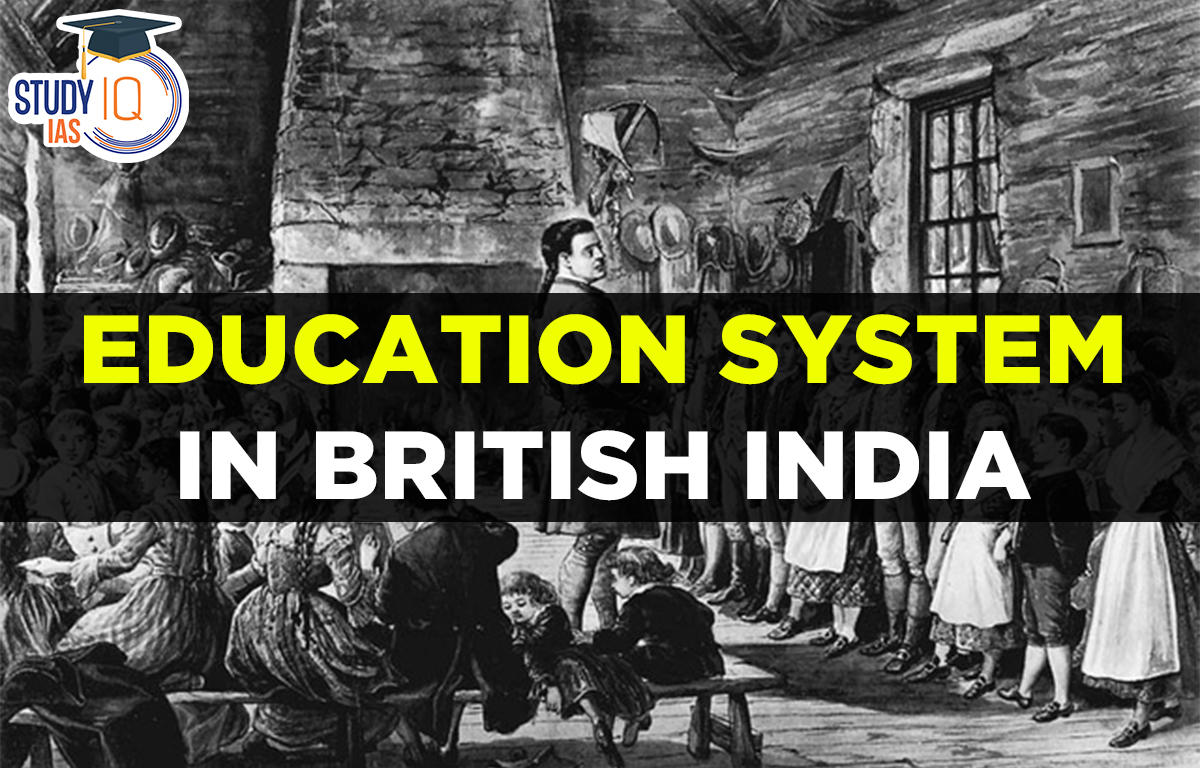
Table of Contents
Education System in British India
Read all about Education system in British India. Modern education and the idea of practical learning were introduced to India by the British school system. In order to better comprehend the nation, the British initially set up educational institutions where people could learn about local customs, traditions, and laws. Under British administration, the East India Company, Christian missionaries, and Indian thinkers and reformers served as three of the main proponents of modern education.
They introduced important laws, commissions, and policies that helped to shape the contemporary conception of education that is still prevalent in India. Learn more about the British Education System in India and how it affects UPSC preparation in the article below.
Read More: Judicial System in British India
British Education System in India History
Gurus taught education to all Hindus without any limitations prior to British control in India. As they instruct them on how to achieve Moksha, the gurus have given them the utmost emphasis. The Mughal Empire also had an impact on Muslim education. Through Maktabs, Madrasas, Tols, and Pathshalas, the young pupils were taught about their various religious texts and old types of literature, as well as some understanding of scientific advances.
A brand-new western educational system emerged following the British invasion. Specific educational policies were developed by them. There are two distinct periods in the history of British education initiatives in India:
- Before 1857, it was under the East India Company .
- After 1857, it was under the British Crown.
Read More: British Administration System
Education System in British India Development
The East India Company initially sought certain educated Indians to help with land management. In order to better understand the nation, they also sought to learn about the cultures, traditions, and laws there.
The first educational institution, Calcutta Madarasa in Calcutta for Islamic Law Studies, was founded in 1781 by Warren Hastings, Governor-General of Bengal. William Jones established the Asiatic Society of Bengal in 1784 with the goal of comprehending and researching Indian culture and history. Charles Wilkins also translated the Bhagwat Gita into English at the same time.
The Sanskrit College was established in 1791 by Benares resident Jonathan Duncan to study and comprehend Hindu beliefs and laws. In the year 1800 – Richard Wellesley, the governor-general, established Fort William College in Calcutta to educate government workers for the EIC in Indian languages. The college was, however, closed down after just two years because the British government (in England) rejected the hiring of Indians as English Civil Servants.
Education System in British India and Acts Associated
1. the charter act of 1813.
The Charter Act of 1813 was the first significant action the British government took to modernise education in India. A yearly budget of Rs. 1 lakh was established by the statute to be used for teaching Indian subjects. The Christian missionaries were involved in schooling during this time, but their main priorities were conversions and religious instruction.
2. The English Education Act of 1835
According to Macauley’s Minutes, or the English Education Act of 1835, the government should prioritise allocating funds for teaching literature and contemporary sciences exclusively in English as part of the British educational system in India. English should be the primary language of instruction in all schools and colleges. Elementary schools lacked any real significance. Opening the district’s schools and colleges was highlighted.
It disregarded general education. Theory of downward filtration: A limited group of middle- and upper-class Indians were trained to serve as a conduit between the populace and the government. Additionally, the Elphinstone College of Bombay and the Calcutta Medical College were founded in 1835. In Adam’s report on vernacular education in Bihar and Bengal in 1835, 1836, and 1838, the flaws in the system were highlighted.
Following 1857, Mayo College in Ajmer and Rajkot College of Kathiawar were founded in 1868 and 1875, respectively. These universities specialised in political education for Indian princes and aristocracy. The commissions like Saddler, Raleigh, and Hunder, established under the British Crown, etc., mainly recommended the establishment of reforms in the British education system in India.
1. Hunter Commission on Indian Education in 1882
In order to realise the goal of popular education through vernacular languages, the Hunter Commission on Indian Education of 1882 called for further government initiatives. It suggested separating secondary education into two streams: vocational education and literary instruction. It placed a focus on women’s education outside of the presidential towns. Municipal boards and new districts should take over responsibility of primary education.
2. Raleigh Commission in 1902
Viceroy Curzon thought that college students often harbour revolutionary beliefs. He suggested that the panel examine the university education system in India, which resulted in the universities act of 1904.
3. Indian Universities Act of 1904
All institutions were subject to governmental oversight under the Indian Universities Act of 1904. It states that universities should place a greater priority on research and study over revolutionary activity. The government selected them after the statute restricted the number of fellows. The government now has the ability to veto decisions made by the University senate. It developed more stringent affiliation guidelines. In all the princely states of Baroda, primary education became compulsory in 1906. The government adopted a new resolution on education policy in 1913.
4. Saddler University Commission (1917-19)
The Saddler University Commission was established as a result of Calcutta University students’ subpar academic performance. Maybe it ended up examining all the Indian universities recently. The following are the Saddler University Commission’s main concerns:
- The emphasis was on secondary education. It adheres to the philosophy that secondary education must be improved in order for university education to advance.
- The Commission estimates that the school should be finished in 12 years.
- It proposed the notion of establishing distinct boards for intermediate and secondary education.
- It placed a strong emphasis on educating women, teacher preparation, technical education, and the application of science.
- It highlights the need for all institutions to operate independently as centralised resident teaching bodies.
It was decided to establish universities in Osmania, Lucknow, Dacca, Aligarh, Benares, Patna, and Mysore. The Hartog Committee was established in 1929 to focus on basic education in British India and decided that a compulsory education system was unnecessary.
5. Wardha Scheme of Basic Education by INC in 1937
The Indian National Congress held a convention at Wardha to talk about education in 1937. It created a programme that was centred on practical education, or learning via exercises inspired by Gandhi’s principles. It contains:
- The curriculum should cover fundamental handicrafts.
- The first seven years of schooling should be free and required.
- Hindi should be taught to students up till class 7, and English should follow. However, because so many INC preachers began serving after World War II, it was never put into practice.
6. Sergeant Plan of Education by the Central Advisory Board of Education
The central advisory board for education introduced the Sergeant plan of education in 1944. It includes: Students in the age range of 3-6 years received free education. 6–11 years of students’ compulsory education. A pupil between the ages of 11 and 17 received higher education. It concentrated on enhancing technical, commercial, and artistic education. Additionally, it placed emphasis on teaching pupils who are physically and mentally challenged.
Education System in British India Impact
Englishmen intended to promote western education in India for their own benefit since the East India Company had a great need for clerks, lower-class workers, and other administrative positions. They discovered that they could easily find Indian workers at lower prices than Englishmen from England around that time. Indians had a comparatively low literacy rate, but the women were still denied an education. They also disregarded technical and scientific education. British India’s illiteracy percentage dropped from 94% in 1911 to 92% in 1921. This article has all the detail about Education System in British India for UPSC Exam.
Sharing is caring!
How was the British system of education?
Primary education, secondary education, further education, and higher education make up the four main components of the UK's educational system. In the UK, children are required by law to attend primary and secondary school, which lasts from around the age of 5 until the student is 16 years old.
Who started British education system in India?
Fort William College was established in Calcutta by Governor-General Richard Wellesley to educate EIC administration workers in Indian languages and customs.
What was the education system after British?
How was british system of education different from.
Traditional Indian education differed from British education in the following ways: English replaced the old system's vernacular languages as the primary language of instruction.
What was the aim of British Education in India?
The initial goal was to create a class of translators to serve as a link between the British emperors and the millions of Indians they ruled. The second goal was to develop a group of people who were British in intelligence, taste, and morals but of Indian blood and color.

Leave a comment
Your email address will not be published. Required fields are marked *
Save my name, email, and website in this browser for the next time I comment.

- UPSC Online Coaching
- UPSC Exam 2024
- UPSC Syllabus 2024
- UPSC Prelims Syllabus 2024
- UPSC Mains Syllabus 2024
- UPSC Exam Pattern 2024
- UPSC Age Limit 2024
- UPSC Calendar 2024
- UPSC Syllabus in Hindi
- UPSC Full Form

Recent Posts
- UPPSC Exam 2024
- UPPSC Calendar
- UPPSC Syllabus 2024
- UPPSC Exam Pattern 2024
- UPPSC Application Form 2024
- UPPSC Eligibility Criteria 2024
- UPPSC Admit card 2024
- UPPSC Salary And Posts
- UPPSC Cut Off
- UPPSC Previous Year Paper
BPSC Exam 2024
- BPSC 70th Notification
- BPSC 69th Exam Analysis
- BPSC Admit Card
- BPSC Syllabus
- BPSC Exam Pattern
- BPSC Cut Off
- BPSC Question Papers
IB ACIO Exam
- IB ACIO Salary
- IB ACIO Syllabus
CSIR SO ASO Exam
- CSIR SO ASO Exam 2024
- CSIR SO ASO Result 2024
- CSIR SO ASO Exam Date
- CSIR SO ASO Question Paper
- CSIR SO ASO Answer key 2024
- CSIR SO ASO Exam Date 2024
- CSIR SO ASO Syllabus 2024
Study Material Categories
- Daily The Hindu Analysis
- Daily Practice Quiz for Prelims
- Daily Answer Writing
- Daily Current Affairs
- Indian Polity
- Environment and Ecology
- Art and Culture
- General Knowledge
- Biographies

IMPORTANT EXAMS

- Terms & Conditions
- Return & Refund Policy
- Privacy Policy
- Skip to primary navigation
- Skip to main content
- Skip to primary sidebar
UPSC Coaching, Study Materials, and Mock Exams
Enroll in ClearIAS UPSC Coaching Join Now Log In
Call us: +91-9605741000
Education in British India: The History of Indian Pedagogy
Last updated on January 18, 2022 by ClearIAS Team

The education system that existed in ancient and medieval India was prominently that of the ‘Gurukula’ type. In this system, students lived with the teacher or ‘guru’ in the same house. However, even at that time, India was reputed for many global universities like Nalanda.
The colonial conquest led to the fall of the education system in India. For the initial sixty-odd years, the British did not pay any heed to advancing the education system in the country. As their territory increased and they started to control the revenue and administration, the need for educating the Indians in English became a necessity to procure manpower.
Later, the Brtish started on a mission to abolish the ancient gurukulam system and sowed seeds for the cultural and linguistic upheaval of the country.
Table of Contents
History of Education policies in British India
The History of Education policies in British India can be classified into two – before 1857 (under the English East India Company) and after 1857 (under the British Crown).
Education policies in India under the English East India Company
1781: Governor-General of Bengal, Warren Hastings established Calcutta Madarasa for Islamic law studies. It was the first educational institute set by East India Company (EIC) governance.
1784: Asiatic Society of Bengal was founded by William Jones to understand and study the history and culture of India. During this period Charles Wilkins translated Bhagwat Gita to English.
Join Now: UPSC Prelims cum Mains Course
1791: The resident of Benares, Jonathan Duncan founded the Sanskrit college for the study of Hindu laws and philosophies.
1800: Governor-General Richard Wellesley founded the Fort William College in Calcutta to train the civil servants of EIC in Indian languages and customs. But this college was closed in 1802 due to disapproval of the British administration in England on Indianising the English civil servants.
The Charter Act of 1813
This was the first noted step towards modern education in the country by the British. This act set aside an annual sum of Rs.1 lakh to be used in educating the Indian subjects.
During all this time the Christian missionaries were active in mass educating the people but they concentrated more on religious teachings and conversions.
Macauley’s minutes / The English Education act of 1835
Governor-General William Bentick’s tenure saw more funds being allocated to education, and the policies were based on the recommendation of Macauley’s minute.
Join Now: CSAT Course
We have to remember that Thomas Macauley had no knowledge or value for Indian and oriental literature and considered western science to be superior to all. He had famously said that “ a single shelf of a good European library was worth the whole native literature of India and Arabia”.
The gist of the minute is:
- Government should spend resources for teaching western sciences and literature in English alone.
- English should be made the medium of education in schools and colleges.
- Elementary schools were not given importance, rather more schools at district levels and colleges were suggested to be opened. Hence, mass education was neglected.
- Downward filtration theory: The British decided to educate a small section of upper and middle-class Indians who would be the bridge between the masses and the government. And this educated would spread western education to the masses gradually.
Adam’s report on vernacular education in Bengal and Bihar was published in 1835, 1836, and 1838 which pointed out the defects in the system of vernacular education.
1843-53: James Jonathan experiment in North West province where he introduced one model school in each tehsil where the vernacular language was used for teaching. There was also another school for training the teachers for these vernacular schools.
Wood’s despatch of 1854
It is also known as the ‘ Magna Carta of English education in India’ was the first comprehensive plan to envisage mass education in India.
Join Now: UPSC Prelims Test Series
It prompted the government to take responsibility for education and suggested grants in aid to encourage private enterprises to invest in education.
- Vernacular languages should be used in primary schools in villages.
- Anglo-vernacular high schools
- Affiliated college at the district level
- Universities in presidency towns
- Gave impetus to female education and vocational training.
- Laid down that there should be secular education in government schools.
Viceroy Mayo’s term saw the establishment of Rajkot college in Kathiawar in 1868 and Mayo college of Ajmer in 1875 for the political training of the Indian princes and elites.
Education policies in India under the Royal Crown of British
Under the British Crown, various commissions like Hunter, Raleigh, Saddler etc submitted recommendations for the reforms in the Indian Education system.
1882: Hunter commission on Indian education
It recommended more government efforts for the improvement of mass education through vernacular languages.
- Transfer of control of primary education to the new district and municipal boards.
- Encourage female education outside presidency towns also.
- Secondary education should be divided into 2 categories-
- Literary ( leads to university through entrance exam)
- Vocational (for commercial jobs)
1902: Raleigh commission
Viceroy Curzon believed that universities were the factories producing students with revolutionary ideologies; hence he constituted the commission to review the entire university education system in India.
The recommendation of the commission led to the universities act of 1904.
1904: Indian Universities Act
The Act brought all Indian universities under the control of the government. The key provisions of the act were-
- More attention to study and research in universities rather than revolutionary activities
- The number of fellows were reduced and were to be nominated by the government
- The government acquired veto power against university senate decisions.
- Stricter affiliation rules.
1906: The princely state of Baroda introduced compulsory primary education in its territories.
1913: Government Resolution on Education Policy
- The government refused to adhere to the demand by leaders of the national movement to introduce compulsory primary education in British India; they did not want the responsibility of mass education.
- But announced a future policy for the removal of illiteracy.
- Provincial governments were asked to take responsibility to provide free elementary education to poorer and backward classes.
- Quality of secondary education and private efforts to be improved.
- One university is to be established in each province.
1917-19: Saddler University commission
It was originally set up to study and report the causes behind the poor performance of Calcutta University however it ended up reviewing all the universities in the country.
- It said that the improvement of secondary education is necessary for the improvement of university education.
- School should be completed in 12 years-
- Students to enter university after intermediate stage (not matric) for a 3-year university degree.
- This would better prepare students for university and make them at par with university standards.
- It will provide collegiate education to those not taking up university degrees.
- Separate board for secondary and intermediate education.
- University should function as a centralized and resident teaching autonomous body.
- Focus on female education, applied scientific and technical education, teachers training.
1916-21: 7 new universities came up at Mysore, Patna, Benares, Aligarh, Dacca, Lucknow, and Osmania.
1920: The Saddler commission recommendations were handed over to the provincial government as education was shifted under provinces in the Montagu-Chelmsford Reforms. This caused a financial crunch in the education sector.
1929: Hartog committee
- Provide primary education but not need of compulsory education system.
- Only deserving students should be allowed to study in high schools and intermediate stage whereas average students should be diverted to vocational courses.
- Restricted admissions in university to improve standards.
1937: Wardha Scheme of basic education by the Indian National Congress (INC)
Congress organized a national conference on education in Wardha and formulated a committee under Zakir Hussain for basic education.
The scheme focused on “learning through activity” which was based on Gandhiji’s ideas published in Harijan.
- Basic handicrafts should be included in the syllabus
- First 7 years of school to be free and compulsory
- Hindi as medium till class 7 and English from class 8 onwards.
These ideas were not implemented due to the resignation of the congress ministries due to the start of World War II.
1944: Sergeant Plan of Education by the Central Advisory Board of Education
- Free primary education for 3-6 years age group.
- Compulsory education for 6-11 years age group
- High school to selected students of 11-17 years age group.
- Improve technical, commercial, and arts education
- Focus on teachers’ training, physical education, and education of mentally and physically handicapped.
The above policies during the British era shaped the modern universities and education system prevailing in India today .

Take a Test: Analyse Your Progress
Aim IAS, IPS, or IFS?

About ClearIAS Team
ClearIAS is one of the most trusted learning platforms in India for UPSC preparation. Around 1 million aspirants learn from the ClearIAS every month.
Our courses and training methods are different from traditional coaching. We give special emphasis on smart work and personal mentorship. Many UPSC toppers thank ClearIAS for our role in their success.
Download the ClearIAS mobile apps now to supplement your self-study efforts with ClearIAS smart-study training.
Don’t lose out without playing the right game!
Follow the ClearIAS Prelims cum Mains (PCM) Integrated Approach.
Join ClearIAS PCM Course Now
UPSC Online Preparation
- Union Public Service Commission (UPSC)
- Indian Administrative Service (IAS)
- Indian Police Service (IPS)
- IAS Exam Eligibility
- UPSC Free Study Materials
- UPSC Exam Guidance
- UPSC Prelims Test Series
- UPSC Syllabus
- UPSC Online
- UPSC Prelims
- UPSC Interview
- UPSC Toppers
- UPSC Previous Year Qns
- UPSC Age Calculator
- UPSC Calendar 2024
- About ClearIAS
- ClearIAS Programs
- ClearIAS Fee Structure
- IAS Coaching
- UPSC Coaching
- UPSC Online Coaching
- ClearIAS Blog
- Important Updates
- Announcements
- Book Review
- ClearIAS App
- Work with us
- Advertise with us
- Privacy Policy
- Terms and Conditions
- Talk to Your Mentor
Featured on

and many more...
General Studies
All Programmes
Study Material
British Education System In India - Features and Impact
Quest for upsc cse panels.

Sub-Categories:
GS-I: Modern History
Prelims: History of India and Indian National Movement
Mains: The Freedom Struggle — its various stages and important contributors/contributions from different parts of the country.
British Education System In India: Different facets of life changed when British territorial rule over India was established. With the handover of power to the British, education was one of those areas that underwent significant change. The colonial rulers created the educational system in a colonial country to legitimise their rule and meet their own economic needs. The British Education System In India was formally established through the Charter Acts.
In 1813, when the Charter was up for renewal, the British Parliament ordered the East India Company to set aside Rs 1 lakh annually "for the revival and promotion of literature, the encouragement of the learned natives of India, and for the introduction and promotion of knowledge of the sciences among the inhabitants of the British territories."
As a result, the Queen made official financial arrangements for the first time, and the East India Company was given responsibility for the natives' education.
Policies under British Education System in India
Before the acquisition of territorial power, the Company had no role in education; however, there were attempts by the missionaries to establish charity schools and to promote learning.
- Due to the fear of adverse reactions and opposition to their role by the local people, the Company maintained neutrality on education after becoming a territorial power.
- The opinions were also divided on whether the Company should promote western or oriental learning.
- Some individuals played a significant role in promoting English education in Calcutta. For example- The establishment of Hindu College by David Hare. Raja Ram Mohan Roy headed its foundation committee.
Impact of British Education System In India
- It helped in creating a new class of people who later helped them in governance as well as in controlling many aspects of administration in India.
- English as a link language: The use of English by Indians provided one language that cut across the entire country and became a common link for them.
- Growth of national consciousness: English books and newspapers brought to Indians new ideas from the West, like freedom, democracy, equality and brotherhood.
- Neglect of mass education: This was one of the major weaknesses of the British Education System In India. In 1911, 94% of Indians lacked literacy, which changed to 92% by 1921.
- Neglect of female education: The almost complete disregard for girls' education, for which there were no funds allocated, was a significant flaw in the early policy of the British Education System In India.
- Neglect of scientific and technical education: The Company’s administration also neglected scientific and technical education. By 1857, the country had only three medical colleges at Calcutta, Bombay, and Madras and only one engineering college in Roorkee.
- Minimal financial support : The issue of finance was at the heart of many of the drawbacks of the education policies during British India.
The indigenous system of education was replaced by the new British Education System In India. There were many Englishmen who tried to promote oriental learning, but the Anglicists prevailed over such Orientalists. New schools and colleges were established to promote learning. New social, political and economic ideas came through the channel of Western education. But the British Education System In India ignored scientific and technical education. Moreover, the beneficiary of this education was mainly the upper crust of society. So the transformation that came with English education was very limited in nature.
PYQs on British Education System In India
Question 1: Wellesley established the Fort William College at Calcutta because (UPSC Prelims 2020)
- he was asked by the Board of Directors at London to do so
- he wanted to revive interest in oriental learning in India
- he wanted to provide William Carey and his associates with employment
- he wanted to train British civilians for administrative purpose in India
Answer: (d)
Question 2: With reference to educational institutes during colonial rule in India, consider the following pairs: (UPSC Prelims 2018)
Institution Founder
- Sanskrit College at Benaras William Jones
- Calcutta Madrasa Warren Hastings
- Fort William College Arthur Wellesley
Which of the pairs given above is/are correct?
Answer: (b)
FAQs on British Education System in India
Q) what were the drawbacks of the british education system in india.
At all levels, the growth of education was uneven. Primary schools were harmed by a lack of funding. Because English was the only language used for instruction, the average person did not benefit from it.
Q) What was the aim of the British Education System In India?
The first goal was to create a class of translators to serve as a link between the British emperors and the millions of Indians they ruled. The second goal was to create a group of people who were British in intelligence, morals, and taste but of Indian blood and colour.
Q) What were the indigenous efforts taken for the spread of education under British rule?
Under British rule, the impetus to education was given by Nationalists. For example- Gokhale was the first and foremost architect of the Bill on compulsory and free education. Clause 6 of Gokhale’s Bill provided for the banning of child labour as a pre-condition for the enforcement of school attendance.
Q) Which was the first education commission set up after independence?
The first committee for the most important education in independent India was the University Education Committee of 1948, Radhakrishnan, to report on the status of Indian university education and propose improvements and extensions.
Q) What was the positive impact of the British Education System on Indian society?
Dalits rebelled and fought for their rights as a result of Dalits being educated by the British in an equal and nondiscriminatory manner. Additionally, widows' rights were granted. Eliminating vices like Sati and untouchability is a step in the direction of a more tolerant and advanced society.
© 2024 Vajiram & Ravi. All rights reserved

Nature and Human Communities pp 27–43 Cite as
Language and Education in Colonial and Post-Colonial India
- Riho Isaka 2
- Conference paper
179 Accesses
1 Citations
The aim of this chapter is to examine how British rule changed the linguistic situation of India and what long-term influence this had on its social and cultural life. It is well known that colonial rule and the new educational system it had introduced established the dominance of English in this region and led to the growth of an English-speaking elite. It should be emphasized, however, that the same colonial education also encouraged this Indian elite to develop an increasingly strong interest in their own vernaculars. Indeed, such English-educated intellectuals began to advocate the reformation and standardization of vernacular languages and to develop vernacular literature, largely based on the British notion of language and literature. This development left a significant influence on the debates over language policy among the Indian elite during the nationalist movement and even after independence.
- Language Policy
- Mother Tongue
- Late 19th Century
- National Language
- Indian Language
These keywords were added by machine and not by the authors. This process is experimental and the keywords may be updated as the learning algorithm improves.
This is a preview of subscription content, log in via an institution .
Buying options
- Available as PDF
- Read on any device
- Instant download
- Own it forever
- Compact, lightweight edition
- Dispatched in 3 to 5 business days
- Free shipping worldwide - see info
- Durable hardcover edition
Tax calculation will be finalised at checkout
Purchases are for personal use only
Unable to display preview. Download preview PDF.
Covernton JG (1906) Occasional reports, no. 2. Vernacular Reading Books in the Bombay Presidency. Director-General of Education, Calcutta.
Google Scholar
Dalpatram D (1915) Gujarat Varnakyular Sosaiti vishe (On the Gujarat Vernacular Society; in Gujarati). In: Dalpatram D, Dalpatkavya 1 (Poems of Dalpat 1). Gujarat Varnakyular Sosaiti, Amdavad, pp.114-118.
Derasari DP (1911) Sathina sahityanun digdarshan (Glimpse of literature in the last 60 years; in Gujarati). Gujarat Varnakyular Sosaiti, Amdavad.
Desai N (1978) Social change in Gujarat: a study of nineteenth century Gujarati society. Vora, Bombay.
Divatia NB (1993) Gujarati language and literature. 1921. Reprint. Asian Educational Service, New Delhi.
Education Commission (1884) Appendix to Education Commission report, Bombay. Vol. II. Government of India, Calcutta.
Forbes AK (1856) Ras Mala: Hindoo annals of the Province of Goozerat in Western India. Richardson Brothers, London.
Fujii T (1994) Indo kenpo seitei katei ni okeru gengo mondai no suii (1) (The framing of language provisions in the Constitution of India, Part 1; in Japanese). Ajia Keizai (Monthly Journal of Institute of Developing Economies) 35(4): 2-24.
Gajendragadkar SN (1974) Parsi-Gujarati: a descriptive analysis. University of Bombay, Bombay.
Gandhi MK (1935) Foreword. In: Munshi KM, Gujarata and its literature: a survey from the earliest times. Longmans, Green, Bombay, pp. v-vi.
Gandhi MK (1956) Thoughts on national language. Navajivan, Ahmedabad.
Gandhi MK (1965) The collected works of Mahatma Gandhi. Vol XIV (October 1917-July 1918). Government of India, New Delhi.
Gandhi MK (1966a) The collected works of Mahatma Gandhi. Vol IX (September 1908-November 1909). Government of India, New Delhi.
Gandhi MK (1966b) The collected works of Mahatma Gandhi. Vol XIX (November 1920-April 1921). Government of India, New Delhi.
Gandhi MK (1970) The collected works of Mahatma Gandhi. Vol XL (February-May 1929). Government of India, New Delhi.
Gandhi MK (1990) Hind Swaraj or Indian home rule. 1938. Reprint. Navajivan, Ahmedabad.
Gandhi MK (1992) An autobiography or the story of my experiments with truth. Translated by Mahadev Desai. 1927. Reprint. Navajivan, Ahmedabad.
Government of Bombay (1859) Report from the Director of Public Instruction, Educational Department, Government of Bombay, 1859. Vol 12, no 462. Maharashtra State Archives, Mumbai.
Government of Bombay (1958) A review of education in Bombay State 1855-1955. Government of Bombay, Bombay.
Grierson GA (1908) Linguistic survey of India. Vol IX. Indo-Aryan family, central group, II. Office of Superintendent of Government Printing, Calcutta.
Gujarat Vidyapith (1967) Sarth Gujarati jodni kosh (Dictionary of Gujarati orthography with meanings; in Gujarati). 1929. Reprint. Gujarat Vidyapith, Amdavad.
Isaka R (2002) Language and dominance: the debates over the Gujarati language in the late nineteenth century. South Asia 24(1): 1-19.
Article Google Scholar
Jhaveri KM (1956) Further milestones in Gujarati literature. 2nd edn. Forbes Gujarati Sabha, Bombay.
Jhaveri M (1978) History of Gujarati literature. Sahitya Akademi, New Delhi.
King CR (1994) One language, two scripts: the Hindi movement in nineteenth century North India. Oxford University Press, Bombay.
King RD (1998) Nehru and the language politics of India. Oxford University Press, Delhi.
Kulke E (1978) The Parsees in India: a minority as agent of social change. Vikas, New Delhi.
Kumarappa B (ed) (1954) M.K. Gandhi: medium of instruction. Navajivan, Ahmedabad.
Mehta M (1979) Ranchhodlal Chhotalal and the Ahmedabad cotton textile industry: a study in entrepreneurial history. PhD thesis, Gujarat University, Ahmedabad.
Mitra HN (ed) (1988) The Indian annual register: an annual digest of public affairs of India, 1921. Vol II. Gian, Delhi.
Munshi KM (1940) I follow the Mahatma. Allied Publishers, Bombay.
Murzban MM (1915) Leaves from the life of Khan Bahadur Muncherji Cowasji Murzban, C.I.E with an introduction containing a life-sketch of Fardunji Murzbanji, founder of Gujarati printing press and of Gujarati journalism in India. F. B. Marzban, Bombay.
Nayak CR (1954) Gujarati par Arabi Pharsini asar (Influence of Arabic and Persian on Gujarati; in Gujarati). Vol 1. Gujarat Vidya Sabha, Amdavad.
Nayak CR (1955) Gujarati par Arabi Pharsini asar (Influence of Arabic and Persian on Gujarati; in Gujarati). Vol 2. Gujarat Vidya Sabha, Amdavad.
Nurullah S, Naik JP (1951) A history of education in India (during the British period). Macmillan, Bombay.
Parekh HT (1935a) Gujarat Varnakyular Sosaitino itihas (History of the Gujarat Vernacular Society; in Gujarati). Vol 1. H.T. Parekh, Amdavad.
Parekh HT (1935b) Gujarat Varnakyular Sosaitino itihas (History of the Gujarat Vernacular Society; in Gujarati). Vol 2. H.T. Parekh, Amdavad.
Parel AJ (ed) (1997) M.K. Gandhi: Hind Swaraj and other writings. Cambridge University Press, Cambridge.
Prabhu RK (ed) (1958) M.K. Gandhi: evil wrought by the English medium. Navajivan, Ahmedabad.
Raval RL (1987) Socio-religious reform movements in Gujarat: during the 19th century. Ess Ess, New Delhi.
Rawlinson HG (ed) (1924) Ras Mala: Hindoo annals of the province of Goozerat in Western India, by Alexander Kinloch Forbes. Vol I. Oxford University Press, London.
Rudolph SH, Rudolph LI (1972) Education and politics of India: studies in organization, society, and policy. Oxford University Press, Delhi.
Rushdie S (1997) Introduction. In: Rushdie S, West E (eds) The vintage book of Indian writing: 1947-1997. Vintage, London, pp. ix-xxii.
Shah KN (1990) Ahmedabad: pre-industrial to industrial urban centre (1859-1930). PhD thesis, S.N.D.T. University, Bombay.
Shaw G (1989) The beginning of printing in Bombay. In: Rohatgi P, Godrej P (eds) India: a pageant of prints. Marg, Bombay, pp.111-124.
Thoothi NA (1935) The Vaishnavas of Gujarat: being a study in methods of investigation of social phenomena. Longmans, Green, Calcutta, London.
Yagnik A (1998) My mother tongue. Seminar 470:58-62.
Yagnik I (1967) Atmakatha (Autobiography; in Gujarati). Vol. 1. 2nd edn. Ravani Praka-shan Grha, Amdavad.
Download references
Author information
Authors and affiliations.
Graduate School of Arts and Sciences, The University of Tokyo, Tokyo, Japan
You can also search for this author in PubMed Google Scholar
Editor information
Editors and affiliations.
The University of Tokyo, 7-3-1 Hongo, Bunkyo-ku, Tokyo, 113-0033, Japan
Takeshi Sasaki ( President ) ( President )
Rights and permissions
Reprints and permissions
Copyright information
© 2004 Springer Japan

About this paper
Cite this paper.
Isaka, R. (2004). Language and Education in Colonial and Post-Colonial India. In: Sasaki, T. (eds) Nature and Human Communities. Springer, Tokyo. https://doi.org/10.1007/978-4-431-53967-4_2
Download citation
DOI : https://doi.org/10.1007/978-4-431-53967-4_2
Publisher Name : Springer, Tokyo
Print ISBN : 978-4-431-67970-7
Online ISBN : 978-4-431-53967-4
eBook Packages : Springer Book Archive
Share this paper
Anyone you share the following link with will be able to read this content:
Sorry, a shareable link is not currently available for this article.
Provided by the Springer Nature SharedIt content-sharing initiative
- Publish with us
Policies and ethics
- Find a journal
- Track your research
- Previous Year Question paper – PSC
- Syllabus – PSC
Impact of the British Raj on the Indian Education System
- Post author: Ash Sharma
- Post published: 13 April 2023
- Post category: Education
- Post comments: 1 Comment
- Post last modified: 3 June 2023
- Reading time: 10 mins read

Education is a fundamental aspect of human development that has shaped societies throughout history. The Indian education system has undergone significant transformations since the arrival of the British. This article aims to explore the impact of British rule on Indian education, the changes brought about by the British, and the legacy of British influence on the Indian education system.
Table of Contents
Introduction.
The British arrived in India in the early 17th century and established colonial rule for over two centuries. One of the most significant legacies of British rule in India was the introduction of a new education system.
The British Education System
The British education system introduced in India was modeled on the British system and was intended to serve the needs of the colonial administration. The system was characterized by a focus on English language and literature, science, and mathematics, with little emphasis on Indian history and culture.
Impact of British Education System on Indian Society
The British education system had a profound impact on Indian society. It created a new class of educated Indians who were exposed to new ideas and values. The education system also contributed to the growth of the Indian middle class, which played a crucial role in the Indian independence movement.
The Role of Missionaries in Education
The British education system was introduced in India by Christian missionaries who believed that education was a means of spreading Christianity. The missionaries established schools and colleges throughout India, which played a crucial role in educating Indians and promoting Western values and culture.
Indian Response to British Education System
Indian responses to the British education system were varied. Some Indians welcomed the new education system and saw it as an opportunity for social mobility. Others rejected the education system as a means of cultural imperialism and sought to preserve traditional Indian education.
The Impact of British Education System on Women
The British education system had a significant impact on women’s education in India. The system opened up new opportunities for women to receive education and enter the workforce. Women’s education also played a crucial role in the Indian women’s liberation movement.
The Legacy of British Education System in India
The British education system had a lasting impact on the Indian education system. It created a new class of English-speaking Indians who played a crucial role in the Indian independence movement. The system also contributed to the growth of the Indian middle class, which has become a driving force behind India’s economic growth.
Challenges Facing the Indian Education System Today
Despite the progress made since independence, the Indian education system continues to face significant challenges. These challenges include unequal access to education, poor quality of education, and a lack of resources.
The British education system had a profound impact on the Indian education system and society. It created new opportunities for education and social mobility, but also contributed to the erosion of traditional Indian education. Today, the Indian education system faces significant challenges, but it is also making progress towards providing quality education to all.
Did the British education system contribute to the Indian independence movement?
Yes, the British education system contributed to the growth of the Indian middle class, which played a crucial role in the Indian independence movement.
Did the British education system have any negative impacts on Indian education?
Yes, the British education system contributed to the erosion of traditional Indian education and culture.
Did the British education system contribute to the growth of the Indian middle class?
Yes, the British education system contributed to the growth of the Indian middle class, which has become a driving force behind India’s economic growth.
What challenges does the Indian education system face today?
The Indian education system faces challenges such as unequal access to education, poor quality of education, and a lack of resources.
Did the British education system have any impact on women’s education in India?
Yes, the British education system had a significant impact on women’s education in India. It opened up new opportunities for women to receive education and enter the workforce, contributing to the Indian women’s liberation movement.
Today, women’s education in India has improved significantly, with more girls attending school and pursuing higher education. However, challenges such as gender discrimination and societal expectations still exist and continue to affect women’s access to education.
Do Follow us on Facebook and updates Checkout our Website
In conclusion, the British education system had a significant impact on the Indian education system and society. While it created new opportunities for education and social mobility, it also contributed to the erosion of traditional Indian education and culture. Today, the Indian education system faces challenges, but it is also making progress towards providing quality education to all. The legacy of the British education system in India remains a subject of debate, but its impact on Indian history and society is undeniable.
Also Read The History of Exams in India: From Ancient Times to Today
Please Share This Share this content
- Opens in a new window
This Post Has One Comment
Have you ever considered creating an e-book or guest uthoring on other websites? I have a blog centered onn the same topics you discuss and would really like to have you share some stories/information. I know my visitors woukd value your work. If you are even remotely interested, feel free to shoot me an e-mail.
Leave a Reply Cancel reply
Save my name, email, and website in this browser for the next time I comment.
You Might Also Like

NHM HARYANA RECRUITMENT OUT.

World Day to Combat Desertification and Drought, 17 June: Her Land. Her Rights.

RAILWAY CLAIMS TRIBUNAL CHANDIGARH RECRUITMENT OUT.

Day of the Seafarer 2023: Celebrating Seafarers’ Commitment

World Environment Day 2023: Join the Global Effort to #BeatPlasticPollution

CBSE Changes in Class 11, 12 Question Paper Format: Adapts to NEP 2020

SBI Exam Calendar 2024: Complete Schedule and Important Dates

Angdaan Mahotsav: Spreading Awareness on Indian Organ Donation Day

World Elder Abuse Awareness Day 2023: Closing the Circle

NIELIT RECRUITMENT 2023 FOR 56 VACANCIES ACROSS INDIA LIKE MTS, LIBRARY ASSITANT AND MORE.

International Day of Combating Sand and Dust Storms 2023

International Youth Day 2023: Green Skills for a Sustainable Future

International Day of Remembrance and Tribute to the Victims of Terrorism 2023: Honoring Those Affected by Acts of Hatred

Indian Oil Recruitment out for 1603 Posts, Apply before 5.01.2024

Why the Indian Education System Needs to Focus on Skills Rather Than Marks

Tamil New Year Celebrations, Learn About the Richness of Tamil Culture
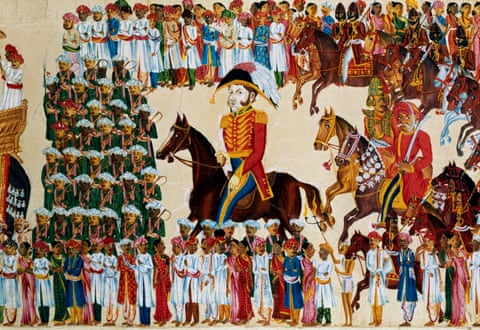
Illusions of empire: Amartya Sen on what British rule really did for India
It is true that before British rule, India was starting to fall behind other parts of the world – but many of the arguments defending the Raj are based on serious misconceptions about India’s past, imperialism and history itself
T he British empire in India was in effect established at the Battle of Plassey on 23 June 1757. The battle was swift, beginning at dawn and ending close to sunset. It was a normal monsoon day, with occasional rain in the mango groves at the town of Plassey, which is between Calcutta, where the British were based, and Murshidabad, the capital of the kingdom of Bengal. It was in those mango groves that the British forces faced the Nawab Siraj-ud-Doula’s army and convincingly defeated it.
British rule ended nearly 200 years later with Jawaharlal Nehru’s famous speech on India’s “tryst with destiny” at midnight on 14 August 1947. Two hundred years is a long time. What did the British achieve in India, and what did they fail to accomplish?
During my days as a student at a progressive school in West Bengal in the 1940s, these questions came into our discussion constantly. They remain important even today, not least because the British empire is often invoked in discussions about successful global governance. It has also been invoked to try to persuade the US to acknowledge its role as the pre-eminent imperial power in the world today: “Should the United States seek to shed – or to shoulder – the imperial load it has inherited?” the historian Niall Ferguson has asked . It is certainly an interesting question, and Ferguson is right to argue that it cannot be answered without an understanding of how the British empire rose and fell – and what it managed to do.
Arguing about all this at Santiniketan school, which had been established by Rabindranath Tagore some decades earlier, we were bothered by a difficult methodological question. How could we think about what India would have been like in the 1940s had British rule not occurred at all?
The frequent temptation to compare India in 1757 (when British rule was beginning) with India in 1947 (when the British were leaving ) would tell us very little, because in the absence of British rule, India would of course not have remained the same as it was at the time of Plassey. The country would not have stood still had the British conquest not occurred. But how do we answer the question about what difference was made by British rule?
To illustrate the relevance of such an “alternative history”, we may consider another case – one with a potential imperial conquest that did not in fact occur. Let’s think about Commodore Matthew Perry of the US navy, who steamed into the bay of Edo in Japan in 1853 with four warships. Now consider the possibility that Perry was not merely making a show of American strength (as was in fact the case), but was instead the advance guard of an American conquest of Japan, establishing a new American empire in the land of the rising sun, rather as Robert Clive did in India . If we were to assess the achievements of the supposed American rule of Japan through the simple device of comparing Japan before that imperial conquest in 1853 with Japan after the American domination ended, whenever that might be, and attribute all the differences to the effects of the American empire, we would miss all the contributions of the Meiji restoration from 1868 onwards, and of other globalising changes that were going on. Japan did not stand still; nor would India have done so.
While we can see what actually happened in Japan under Meiji rule, it is extremely hard to guess with any confidence what course the history of the Indian subcontinent would have taken had the British conquest not occurred. Would India have moved, like Japan, towards modernisation in an increasingly globalising world, or would it have remained resistant to change, like Afghanistan, or would it have hastened slowly, like Thailand?
These are impossibly difficult questions to answer. And yet, even without real alternative historical scenarios, there are some limited questions that can be answered, which may contribute to an intelligent understanding of the role that British rule played in India. We can ask: what were the challenges that India faced at the time of the British conquest, and what happened in those critical areas during the British rule?
T here was surely a need for major changes in a rather chaotic and institutionally backward India. To recognise the need for change in India in the mid-18th century does not require us to ignore – as many Indian super-nationalists fear – the great achievements in India’s past, with its extraordinary history of accomplishments in philosophy, mathematics, literature, arts, architecture, music, medicine, linguistics and astronomy. India had also achieved considerable success in building a thriving economy with flourishing trade and commerce well before the colonial period – the economic wealth of India was amply acknowledged by British observers such as Adam Smith.
The fact is, nevertheless, that even with those achievements, in the mid-18th century India had in many ways fallen well behind what was being achieved in Europe. The exact nature and significance of this backwardness were frequent subjects of lively debates in the evenings at my school.
An insightful essay on India by Karl Marx particularly engaged the attention of some of us. Writing in 1853, Marx pointed to the constructive role of British rule in India, on the grounds that India needed some radical re-examination and self-scrutiny. And Britain did indeed serve as India’s primary western contact, particularly in the course of the 19th century. The importance of this influence would be hard to neglect. The indigenous globalised culture that was slowly emerging in India was deeply indebted not only to British writing, but also to books and articles in other – that is non-English – European languages that became known in India through the British.
Figures such as the Calcutta philosopher Ram Mohan Roy, born in 1772, were influenced not only by traditional knowledge of Sanskrit, Arabic and Persian texts, but also by the growing familiarity with English writings. After Roy, in Bengal itself there were also Ishwar Chandra Vidyasagar, Madhusudan Dutta and several generations of Tagores and their followers who were re-examining the India they had inherited in the light of what they saw happening in Europe in the 18th and 19th centuries. Their main – often their only – source of information were the books (usually in English) circulating in India, thanks to British rule. That intellectual influence, covering a wide range of European cultures, survives strongly today, even as the military, political and economic power of the British has declined dramatically.
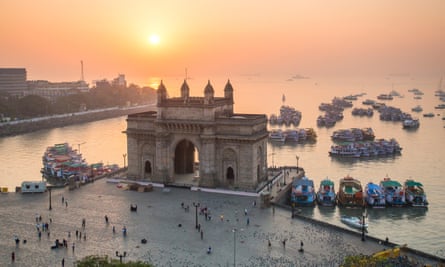
I was persuaded that Marx was basically right in his diagnosis of the need for some radical change in India, as its old order was crumbling as a result of not having been a part of the intellectual and economic globalisation that the Renaissance and the Industrial Revolution had initiated across the world (along with, alas, colonialism).
There was arguably, however, a serious flaw in Marx’s thesis, in particular in his implicit presumption that the British conquest was the only window on the modern world that could have opened for India. What India needed at the time was more constructive globalisation, but that is not the same thing as imperialism. The distinction is important. Throughout India’s long history, it persistently enjoyed exchanges of ideas as well as of commodities with the outside world. Traders, settlers and scholars moved between India and further east – China, Indonesia, Malaysia, Cambodia, Vietnam, Thailand and elsewhere – for a great many centuries, beginning more than 2,000 years ago. The far-reaching influence of this movement – especially on language, literature and architecture – can be seen plentifully even today. There were also huge global influences by means of India’s open-frontier attitude in welcoming fugitives from its early days.
Jewish immigration into India began right after the fall of Jerusalem in the first century and continued for many hundreds of years. Baghdadi Jews, such as the highly successful Sassoons, came in large numbers even as late as the 18th century. Christians started coming at least from the fourth century, and possibly much earlier. There are colourful legends about this, including one that tells us that the first person St Thomas the Apostle met after coming to India in the first century was a Jewish girl playing the flute on the Malabar coast. We loved that evocative – and undoubtedly apocryphal – anecdote in our classroom discussions, because it illustrated the multicultural roots of Indian traditions.
The Parsis started arriving from the early eighth century – as soon as persecution began in their Iranian homeland. Later in that century, the Armenians began to leave their footprints from Kerala to Bengal. Muslim Arab traders had a substantial presence on the west coast of India from around that time – well before the arrival of Muslim conquerors many centuries later, through the arid terrain in the north-west of the subcontinent. Persecuted Bahá’ís from Iran came only in the 19th century.
At the time of the Battle of Plassey, there were already businessmen, traders and other professionals from a number of different European nations well settled near the mouth of the Ganges. Being subjected to imperial rule is thus not the only way of making connections with, or learning things from, foreign countries. When the Meiji Restoration established a new reformist government in Japan in 1868 (which was not unrelated to the internal political impact of Commodore Perry’s show of force a decade earlier), the Japanese went straight to learning from the west without being subjected to imperialism. They sent people for training in the US and Europe, and made institutional changes that were clearly inspired by western experience. They did not wait to be coercively globalised via imperialism.
O ne of the achievements to which British imperial theorists tended to give a good deal of emphasis was the role of the British in producing a united India. In this analysis, India was a collection of fragmented kingdoms until British rule made a country out of these diverse regimes. It was argued that India was previously not one country at all, but a thoroughly divided land mass. It was the British empire, so the claim goes, that welded India into a nation. Winston Churchill even remarked that before the British came, there was no Indian nation. “India is a geographical term. It is no more a united nation than the equator,” he once said.
If this is true, the empire clearly made an indirect contribution to the modernisation of India through its unifying role. However, is the grand claim about the big role of the Raj in bringing about a united India correct? Certainly, when Clive’s East India Company defeated the nawab of Bengal in 1757, there was no single power ruling over all of India. Yet it is a great leap from the proximate story of Britain imposing a single united regime on India (as did actually occur) to the huge claim that only the British could have created a united India out of a set of disparate states.
That way of looking at Indian history would go firmly against the reality of the large domestic empires that had characterised India throughout the millennia. The ambitious and energetic emperors from the third century BC did not accept that their regimes were complete until the bulk of what they took to be one country was united under their rule. There were major roles here for Ashoka Maurya, the Gupta emperors, Alauddin Khalji, the Mughals and others. Indian history shows a sequential alternation of large domestic empires with clusters of fragmented kingdoms. We should therefore not make the mistake of assuming that the fragmented governance of mid-18th century India was the state in which the country typically found itself throughout history, until the British helpfully came along to unite it.
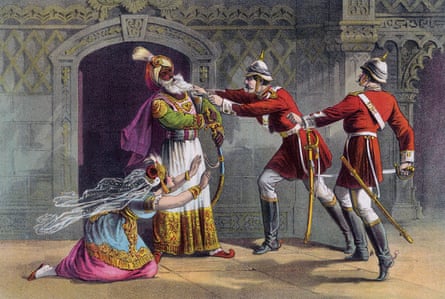
Even though in history textbooks the British were often assumed to be the successors of the Mughals in India, it is important to note that the British did not in fact take on the Mughals when they were a force to be reckoned with. British rule began when the Mughals’ power had declined, though formally even the nawab of Bengal, whom the British defeated, was their subject. The nawab still swore allegiance to the Mughal emperor, without paying very much attention to his dictates. The imperial status of the Mughal authority over India continued to be widely acknowledged even though the powerful empire itself was missing.
When the so-called sepoy mutiny threatened the foundations of British India in 1857, the diverse anti-British forces participating in the joint rebellion could be aligned through their shared acceptance of the formal legitimacy of the Mughal emperor as the ruler of India. The emperor was, in fact, reluctant to lead the rebels, but this did not stop the rebels from declaring him the emperor of all India. The 82-year-old Mughal monarch, Bahadur Shah II, known as Zafar, was far more interested in reading and writing poetry than in fighting wars or ruling India. He could do little to help the 1,400 unarmed civilians of Delhi whom the British killed as the mutiny was brutally crushed and the city largely destroyed. The poet-emperor was banished to Burma, where he died.
As a child growing up in Burma in the 1930s, I was taken by my parents to see Zafar’s grave in Rangoon, which was close to the famous Shwedagon Pagoda. The grave was not allowed to be anything more than an undistinguished stone slab covered with corrugated iron. I remember discussing with my father how the British rulers of India and Burma must evidently have been afraid of the evocative power of the remains of the last Mughal emperor. The inscription on the grave noted only that “Bahadur Shah was ex-King of Delhi” – no mention of “empire” in the commemoration! It was only much later, in the 1990s, that Zafar would be honoured with something closer to what could decently serve as the grave of the last Mughal emperor.
I n the absence of the British Raj, the most likely successors to the Mughals would probably have been the newly emerging Hindu Maratha powers near Bombay, who periodically sacked the Mughal capital of Delhi and exercised their power to intervene across India. Already by 1742, the East India Company had built a huge “Maratha ditch” at the edge of Calcutta to slow down the lightning raids of the Maratha cavalry, which rode rapidly across 1,000 miles or more. But the Marathas were still quite far from putting together anything like the plan of an all-India empire.
The British, by contrast, were not satisfied until they were the dominant power across the bulk of the subcontinent, and in this they were not so much bringing a new vision of a united India from abroad as acting as the successor of previous domestic empires. British rule spread to the rest of the country from its imperial foundations in Calcutta, beginning almost immediately after Plassey. As the company’s power expanded across India, Calcutta became the capital of the newly emerging empire, a position it occupied from the mid-18th century until 1911 (when the capital was moved to Delhi). It was from Calcutta that the conquest of other parts of India was planned and directed. The profits made by the East India Company from its economic operations in Bengal financed, to a great extent, the wars that the British waged across India in the period of their colonial expansion.
What has been called “the financial bleeding of Bengal” began very soon after Plassey. With the nawabs under their control, the company made big money not only from territorial revenues, but also from the unique privilege of duty-free trade in the rich Bengal economy – even without counting the so-called gifts that the Company regularly extracted from local merchants. Those who wish to be inspired by the glory of the British empire would do well to avoid reading Adam Smith’s The Wealth of Nations, including his discussion of the abuse of state power by a “mercantile company which oppresses and domineers in the East Indies”. As the historian William Dalrymple has observed: “The economic figures speak for themselves. In 1600, when the East India Company was founded, Britain was generating 1.8% of the world’s GDP, while India was producing 22.5%. By the peak of the Raj, those figures had more or less been reversed: India was reduced from the world’s leading manufacturing nation to a symbol of famine and deprivation.”
While most of the loot from the financial bleeding accrued to British company officials in Bengal, there was widespread participation by the political and business leadership in Britain: nearly a quarter of the members of parliament in London owned stocks in the East India Company after Plassey. The commercial benefits from Britain’s Indian empire thus reached far into the British establishment.
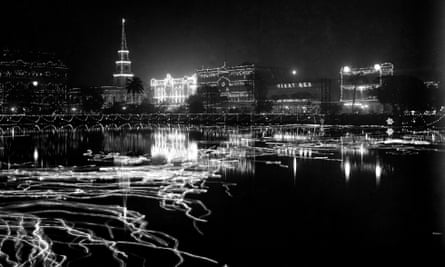
The robber-ruler synthesis did eventually give way to what would eventually become classical colonialism, with the recognition of the need for law and order and a modicum of reasonable governance. But the early misuse of state power by the East India Company put the economy of Bengal under huge stress. What the cartographer John Thornton, in his famous chart of the region in 1703, had described as “the Rich Kingdom of Bengal” experienced a gigantic famine during 1769–70. Contemporary estimates suggested that about a third of the Bengal population died. This is almost certainly an overestimate. There was no doubt, however, that it was a huge catastrophe, with massive starvation and mortality – in a region that had seen no famine for a very long time.
This disaster had at least two significant effects. First, the inequity of early British rule in India became the subject of considerable political criticism in Britain itself. By the time Adam Smith roundly declared in The Wealth of Nations that the East India Company was “altogether unfit to govern its territorial possessions”, there were many British figures, such as Edmund Burke, making similar critiques. Second, the economic decline of Bengal did eventually ruin the company’s business as well, hurting British investors themselves, and giving the powers in London reason to change their business in India into more of a regular state-run operation.
By the late 18th century, the period of so-called “post-Plassey plunder”, with which British rule in India began, was giving way to the sort of colonial subjugation that would soon become the imperial standard, and with which the subcontinent would become more and more familiar in the following century and a half.
H ow successful was this long phase of classical imperialism in British India, which lasted from the late 18th century until independence in 1947? The British claimed a huge set of achievements, including democracy, the rule of law, railways, the joint stock company and cricket, but the gap between theory and practice – with the exception of cricket – remained wide throughout the history of imperial relations between the two countries. Putting the tally together in the years of pre-independence assessment, it was easy to see how far short the achievements were compared with the rhetoric of accomplishment.
Indeed, Rudyard Kipling caught the self-congratulatory note of the British imperial administrator admirably well in his famous poem on imperialism:
Take up the White Man’s burden – The savage wars of peace – Fill full the mouth of famine And bid the sickness cease
Alas, neither the stopping of famines nor the remedying of ill health was part of the high-performance achievements of British rule in India. Nothing could lead us away from the fact that life expectancy at birth in India as the empire ended was abysmally low: 32 years, at most.
The abstemiousness of colonial rule in neglecting basic education reflects the view taken by the dominant administrators of the needs of the subject nation. There was a huge asymmetry between the ruler and the ruled. The British government became increasingly determined in the 19th century to achieve universal literacy for the native British population. In contrast, the literacy rates in India under the Raj were very low. When the empire ended, the adult literacy rate in India was barely 15%. The only regions in India with comparatively high literacy were the “native kingdoms” of Travancore and Cochin (formally outside the British empire), which, since independence, have constituted the bulk of the state of Kerala. These kingdoms, though dependent on the British administration for foreign policy and defence, had remained technically outside the empire and had considerable freedom in domestic policy, which they exercised in favour of more school education and public health care.
The 200 years of colonial rule were also a period of massive economic stagnation, with hardly any advance at all in real GNP per capita. These grim facts were much aired after independence in the newly liberated media, whose rich culture was in part – it must be acknowledged – an inheritance from British civil society. Even though the Indian media was very often muzzled during the Raj – mostly to prohibit criticism of imperial rule, for example at the time of the Bengal famine of 1943 – the tradition of a free press, carefully cultivated in Britain, provided a good model for India to follow as the country achieved independence.
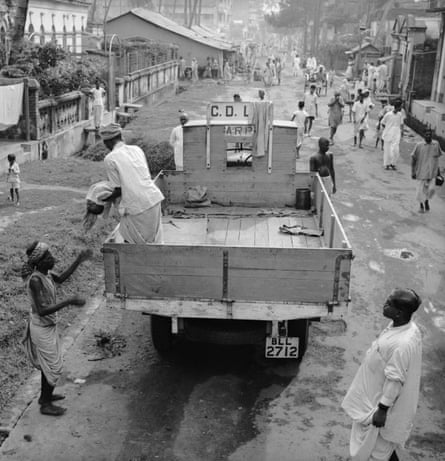
Indeed, India received many constructive things from Britain that did not – could not – come into their own until after independence. Literature in the Indian languages took some inspiration and borrowed genres from English literature, including the flourishing tradition of writing in English. Under the Raj, there were restrictions on what could be published and propagated (even some of Tagore’s books were banned). These days the government of India has no such need, but alas – for altogether different reasons of domestic politics – the restrictions are sometimes no less intrusive than during the colonial rule.
Nothing is perhaps as important in this respect as the functioning of a multiparty democracy and a free press. But often enough these were not gifts that could be exercised under the British administration during imperial days. They became realisable only when the British left – they were the fruits of learning from Britain’s own experience, which India could use freely only after the period of empire had ended. Imperial rule tends to require some degree of tyranny: asymmetrical power is not usually associated with a free press or with a vote-counting democracy, since neither of them is compatible with the need to keep colonial subjects in check.
A similar scepticism is appropriate about the British claim that they had eliminated famine in dependent territories such as India. British governance of India began with the famine of 1769-70, and there were regular famines in India throughout the duration of British rule. The Raj also ended with the terrible famine of 1943. In contrast, there has been no famine in India since independence in 1947.
The irony again is that the institutions that ended famines in independent India – democracy and an independent media – came directly from Britain. The connection between these institutions and famine prevention is simple to understand. Famines are easy to prevent, since the distribution of a comparatively small amount of free food, or the offering of some public employment at comparatively modest wages (which gives the beneficiaries the ability to buy food), allows those threatened by famine the ability to escape extreme hunger. So any government should be able stop a threatening famine – large or small – and it is very much in the interest of a government in a functioning democracy, facing a free press, to do so. A free press makes the facts of a developing famine known to all, and a democratic vote makes it hard to win elections during – or after – a famine, hence giving a government the additional incentive to tackle the issue without delay.
India did not have this freedom from famine for as long as its people were without their democratic rights, even though it was being ruled by the foremost democracy in the world, with a famously free press in the metropolis – but not in the colonies. These freedom-oriented institutions were for the rulers but not for the imperial subjects.
In the powerful indictment of British rule in India that Tagore presented in 1941, he argued that India had gained a great deal from its association with Britain, for example, from “discussions centred upon Shakespeare’s drama and Byron’s poetry and above all … the large-hearted liberalism of 19th-century English politics”. The tragedy, he said, came from the fact that what “was truly best in their own civilisation, the upholding of dignity of human relationships, has no place in the British administration of this country”. Indeed, the British could not have allowed Indian subjects to avail themselves of these freedoms without threatening the empire itself.
The distinction between the role of Britain and that of British imperialism could not have been clearer. As the union jack was being lowered across India, it was a distinction of which we were profoundly aware.
Adapted from Home in the World: A Memoir by Amartya Sen, published by Allen Lane on 8 July and available at guardianbookshop.com
This article was amended on 29 June 2021. Owing to an editing error, an earlier version incorrectly referred to Karl Marx writing on India in 1953. The essay was written in 1853.
- The long read
- British empire
- Colonialism
- History books
Most viewed
Academia.edu no longer supports Internet Explorer.
To browse Academia.edu and the wider internet faster and more securely, please take a few seconds to upgrade your browser .
Enter the email address you signed up with and we'll email you a reset link.
- We're Hiring!
- Help Center

CHAPTER – III EDUCATIONAL POLICIES IN INDIA UNDER THE BRITISH RULE

Related Papers
International Journal of Management
IAEME Publication
From the ancient period Indians have enjoyed the reputation of being a learned people. Some of the early Hindu and Buddhist centre of learning such as Taxila and Nalanda university were the very famous institution during that time. Education in the beginning was confined to the priestly class with teaching of traditional elements such as religion, logic etc. Then Islamic education introduced in India with the establishment of the Islamic empires and Mqtabas and Madrasas became the seats of learning. The advent of British in India opened a new era in the field of education and the vast changes and development of Indian education had mainly occurred during British era.They brought a new system of education to India which was different from earlier education system.During the British period, education was first ignored but later a series of measures continuing throughout the early half of the 20th century ultimately laid the foundation of education in modern India. They organized the Indian education system and introduced modern scientific learning in India. As a result India had been preceded to a new era under British. In this paper an attempt is made to analyse critically the development of education in India during British period.
Vijay Bedekar
Yudhisthir Mishra
International Journal of Physical and Social Sciences
Mohit Kumar
Patricia Colenzio
This paper is compilation of the state of education system during pre-independence period of India. It elaborates education system as mentioned in different period like Upnishshadic, Bhudhist, Medieval, modern as well as the system being followed at ancient University like Taxila and Nalanda. It examines the education in Mughals period. The educational developments under British rule have been investigated as well Lord Macaulay's Minute
Aniket Singh
Education is a platform in which young generations are trained and make them future-ready. Education provides knowledge and skills which help the person to be employable. The Indian education system is very popular and diversified among other countries’ education systems due to its change in the evolution from ancient to the modern education system. During the ancient and medieval periods of education, students were trained by teachers in such a manner that they can survive and live in that era. After independence, there is a tremendous growth in the Indian education system providing teaching and training in all aspects, but it does not satisfy the global demands of the market. This chapter focuses on teaching methodology, curriculum, characteristics, methods of learning, aims of the Indian education system during the ancient and medieval period and how it differed in today’s modern education and what are the things that our today’s modern education need to learn and implement from ...
Parimala V. Rao
Hassan Imam
Contemporary South Asia, Routledge Publications
Ruchi Shree
Dr. Ajit Mondal
RELATED PAPERS
Nabi Ashrafi
Keith Kendrick
REVISTA ESMAT
Wellington Magalhães
arXiv: Cosmology and Nongalactic Astrophysics
Jaswant Yadav
Andrea Paola Cantarelli
Diabetes Research and Clinical Practice
Ambady Ramachandran
Physical Review Letters
Vicens Alcalde
2001 Conference Proceedings of the 23rd Annual International Conference of the IEEE Engineering in Medicine and Biology Society
François LANGEVIN
Esteban Hasson
Industri farmasi
AS'AD Kilver
Muhammad Aditya Jamin
Financial Cryptography and Data Security
Vincenzo Iovino
2020 International Multi-Conference on: “Organization of Knowledge and Advanced Technologies” (OCTA)
Mouna Belhaj
2007 29th International Conference on Information Technology Interfaces
Oliver Popov
Geomorphology
William Henika
Asian Social Science
Walter White
Colloids and Surfaces A: Physicochemical and Engineering Aspects
Italian journal of pediatrics
Claudio Cravidi
Reski awalia
Current HIV/AIDS reports
Arabian Journal for Science and Engineering
Mahmoud Zeidan Mistarihi
Journal of Threatened Taxa
Kamani Joshua
Journal of Chromatography A
Manish Prajapati
Nayaku Chavan
Granita Haxhani
- We're Hiring!
- Help Center
- Find new research papers in:
- Health Sciences
- Earth Sciences
- Cognitive Science
- Mathematics
- Computer Science
- Academia ©2024
- IAS Preparation
- NCERT Notes for UPSC
- NCERT Notes Education System In India During British Rule
NCERT Notes: Education System In India During British Rule [Modern Indian History For UPSC]
NCERT notes on important topics for the UPSC civil services exam . These notes will also be useful for other competitive exams like banking PO, SSC, state civil services exams and so on. This article talks about the Education System in India during British Rule.
Modern education began in India under British rule. Before the British, India had its own educational systems like the Gurukulas and the Madrassas. The East India Company, during their first 60 years of rule didn’t care much for the education of those they ruled in India. (Even in England, universal education came about at a much later stage.)
Candidates can also download the notes PDF from the link given below.
Education System In India During British Rule (UPSC Notes):- Download PDF Here

Three agents of modern education in India
- The British Government (East India Company)
- Christian missionaries
- Indian intellectuals and reformers
To help ease the path of your IAS preparation, check out the Free NCERT Fundamentals Course– a comprehensive study program to help you cover the NCERTs effectively. Watch the video below to learn more:

Development of Modern Education
- The company wanted some educated Indians who could assist them in the administration of the land.
- Also, they wanted to understand the local customs and laws well.
- For this purpose, Warren Hastings established the Calcutta Madrassa in 1781 for the teaching of Muslim law.
- In 1791, a Sanskrit College was started in Varanasi by Jonathan Duncan for the study of Hindu philosophy and laws.
- The missionaries supported the spread of Western education in India primarily for their proselytising activities. They established many schools with education only being a means to an end which was Christianising and ‘civilising’ the natives.
- The Baptist missionary William Carey had come to India in 1793 and by 1800 there was a Baptist Mission in Serampore, Bengal, and also a number of primary schools there and in nearby areas.
- The Indian reformers believed that to keep up with times, a modern educational system was needed to spread rational thinking and scientific principles.
- The Charter Act of 1813 was the first step towards education being made an objective of the government.
- The act sanctioned a sum of Rs.1 lakh towards the education of Indians in British ruled India. This act also gave an impetus to the missionaries who were given official permission to come to India.
- But there was a split in the government over what kind of education was to be offered to the Indians.
- The orientalists preferred Indians to be given traditional Indian education. Some others, however, wanted Indians to be educated in the western style of education and be taught western subjects.
- There was also another difficulty regarding the language of instruction. Some wanted the use of Indian languages (called vernaculars) while others preferred English.
- Due to these issues, the sum of money allotted was not given until 1823 when the General Committee of Public Instruction decided to impart oriental education.
- In 1835, it was decided that western sciences and literature would be imparted to Indians through the medium of English by Lord William Bentinck’s government.
- Bentinck had appointed Thomas Babington Macaulay as the Chairman of the General Committee of Public Instruction.
- Macaulay was an ardent anglicist who had absolute contempt for Indian learning of any kind. He was supported by Reverend Alexander Duff, JR Colvin, etc.
- On the side of the orientalists were James Prinsep, Henry Thomas Colebrooke, etc.
- Macaulay minutes refer to his proposal of education for the Indians.
- English education should be imparted in place of traditional Indian learning because the oriental culture was ‘defective’ and ‘unholy’.
- He believed in education a few upper and middle-class students.
- In the course of time, education would trickle down to the masses. This was called the infiltration theory.
- He wished to create a class of Indians who were Indian in colour and appearance but English in taste and affiliation.
- In 1835, the Elphinstone College (Bombay) and the Calcutta Medical College were established.
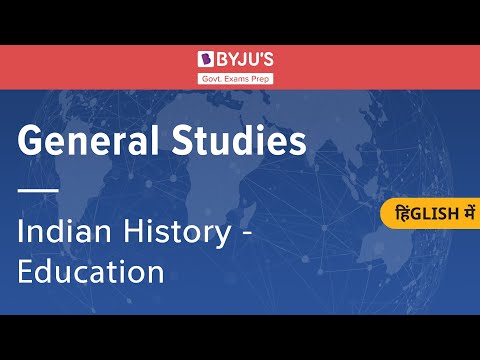
- Sir Charles Wood was the President of the Board of Control of the company in 1854 when he sent a despatch to the then Governor-General of India, Lord Dalhousie.
- This is called the ‘Magna Carta of English education in India.’
- Regularise education system from the primary to the university levels.
- Indians were to be educated in English and their native language.
- The education system was to be set up in every province.
- Every district should have at least one government school.
- Affiliated private schools could be granted aids.
- Education of women should be emphasised.
- Universities of Madras, Calcutta and Bombay were set up by 1857.
- University of Punjab – 1882; University of Allahabad – 1887
- This despatch asked the government to take up the responsibility of education of the people.
- Although there were a few Englishmen who wanted to spread education for its own sake, the government was chiefly concerned only with its own concerns.
- There was a huge demand for clerks and other administrative roles in the company’s functioning.
- It was cheaper to get Indians rather than Englishmen from England for these jobs. This was the prime motive.
- No doubt it spread western education among Indians, but the rate of literacy was abysmally low during British rule.
- The state of women education was pathetic. This was because the government did not want to displease the orthodox nature of Indians and also because women could not generally be employed as clerks.
- In 1911, the illiteracy rate in British India was 94%. In 1921, it was 92%.
- Scientific and technical education was ignored by the British government.
UPSC Questions about British Education Policy in India
Who introduced british education system in india, how did the british rule affect the education system in india.
UPSC Related Articles
Leave a Comment Cancel reply
Your Mobile number and Email id will not be published. Required fields are marked *
Request OTP on Voice Call
Post My Comment
This information is really good and important this help in my project.
CAN U PLS TELL THE PORTION OF MATHS IN CSAT .
Hi Divya UPSC CSAT is a combination of different sections as you can refer in CSAT Syllabus . Questions from Data Interpretation and Basic Numeracy of class 10th level are asked in this exam, considering the Maths subject. The number of questions on Maths problems are balanced in a way, where a candidate with optimum practice, can score well. You can check links given below to help you with CSAT preparation: 1. CSAT Mock Test 2. CSAT Questions
Sir/mam there are only four topics like ancient medival and modern history and geography as well there is no data available regarding political science and economics etc. So where can I get the economics notes
Hi, 1. Polity Notes for UPSC 2. Economy Notes for UPSC
IAS 2024 - Your dream can come true!
Download the ultimate guide to upsc cse preparation.
- Share Share
Register with BYJU'S & Download Free PDFs
Register with byju's & watch live videos.
We will keep fighting for all libraries - stand with us!
Internet Archive Audio

- This Just In
- Grateful Dead
- Old Time Radio
- 78 RPMs and Cylinder Recordings
- Audio Books & Poetry
- Computers, Technology and Science
- Music, Arts & Culture
- News & Public Affairs
- Spirituality & Religion
- Radio News Archive

- Flickr Commons
- Occupy Wall Street Flickr
- NASA Images
- Solar System Collection
- Ames Research Center

- All Software
- Old School Emulation
- MS-DOS Games
- Historical Software
- Classic PC Games
- Software Library
- Kodi Archive and Support File
- Vintage Software
- CD-ROM Software
- CD-ROM Software Library
- Software Sites
- Tucows Software Library
- Shareware CD-ROMs
- Software Capsules Compilation
- CD-ROM Images
- ZX Spectrum
- DOOM Level CD

- Smithsonian Libraries
- FEDLINK (US)
- Lincoln Collection
- American Libraries
- Canadian Libraries
- Universal Library
- Project Gutenberg
- Children's Library
- Biodiversity Heritage Library
- Books by Language
- Additional Collections

- Prelinger Archives
- Democracy Now!
- Occupy Wall Street
- TV NSA Clip Library
- Animation & Cartoons
- Arts & Music
- Computers & Technology
- Cultural & Academic Films
- Ephemeral Films
- Sports Videos
- Videogame Videos
- Youth Media
Search the history of over 866 billion web pages on the Internet.
Mobile Apps
- Wayback Machine (iOS)
- Wayback Machine (Android)
Browser Extensions
Archive-it subscription.
- Explore the Collections
- Build Collections
Save Page Now
Capture a web page as it appears now for use as a trusted citation in the future.
Please enter a valid web address
- Donate Donate icon An illustration of a heart shape
HISTORY OF EDUCATION IN INDIA DURING THE BRITISH RULE
Bookreader item preview, share or embed this item, flag this item for.
- Graphic Violence
- Explicit Sexual Content
- Hate Speech
- Misinformation/Disinformation
- Marketing/Phishing/Advertising
- Misleading/Inaccurate/Missing Metadata
plus-circle Add Review comment Reviews
4,690 Views
3 Favorites
DOWNLOAD OPTIONS
For users with print-disabilities
IN COLLECTIONS
Uploaded by arvind gupta on February 7, 2016
SIMILAR ITEMS (based on metadata)

IMAGES
VIDEO
COMMENTS
Education System in British India and Acts Associated. 1. The Charter Act of 1813. The Charter Act of 1813 was the first significant action the British government took to modernise education in India. A yearly budget of Rs. 1 lakh was established by the statute to be used for teaching Indian subjects.
The education system under the rule of Akbar adopted an inclusive approach with the monarch favoring additional courses: medicine, agriculture, geography, and texts from other languages and religions, ... British India Literacy in India grew very slowly until independence in 1947. An acceleration in the rate of literacy growth occurred in the ...
The British established the modern education system still followed in India. Read to know the policies that shaped today's education system. ... The History of Education policies in British India can be classified into two - before 1857 (under the English East India Company) and after 1857 (under the British Crown).
The colonial rulers created the educational system in a colonial country to legitimise their rule and meet their own economic needs. The British Education System In India was formally established through the Charter Acts. In 1813, when the Charter was up for renewal, the British Parliament ordered the East India Company to set aside Rs 1 lakh ...
Abstract. The aim of this chapter is to examine how British rule changed the linguistic situation of India and what long-term influence this had on its social and cultural life. It is well known that colonial rule and the new educational system it had introduced established the dominance of English in this region and led to the growth of an ...
century, and which continued into the period of British rule. They are still reflected in the modem educational system of India seen in the vast differences between the formal school system, whose benefits reach only a minority of the population on the one hand, and the millions of crafts-persons working in India's informal sector,
The advent of British in India opened a new era in the field of education and the vast changes and development of Indian education had mainly occurred during British era.They brought a new system of education to India which was dif erent from earlier education system.During the British period, education was first ignored but later a series of ...
The school education system in India 7 This report also discusses some of the challenges faced by the Indian education system today. While mean years of schooling has greatly improved, this still lags behind those of other emerging market economies such as China (7.8 years in 2017) and Brazil (7.8 years in 2017). 4 While pupil retention rates
education of its young citizens is not even a full century old. Britain's com-pulsory Education Act came into force in 1870 and 1876. It took nearly twenty years to educate public opinion in favour of accepting compulsion. During this period, India was directly under the British Crown, and the Indian Empire was fully integrated under British rule.
truly national system of education-a system democratic in its foundation and based on the language and culture of the people. India has, then, about 700,-000 villages, and in the early years of British rule many of these villages had elementary schools to which I have al-ready referred. By neglecting them and allowing them to decay, and by deciding
The British education system had a lasting impact on the Indian education system. It created a new class of English-speaking Indians who played a crucial role in the Indian independence movement. The system also contributed to the growth of the Indian middle class, which has become a driving force behind India's economic growth.
The Sargent Plan, or the "Post War Education Development Report" of 1944, was the last effort undertaken by the British rulers to improve education in India. It took account of the system prevalent in England at that time and drew also on earlier reports, including the latest one on basic education.
Updated on: November 14th, 2023. British Education System in India introduced the concept of practical learning and modern education in India. Initially, the British established educational institutions for learning about the local customs, traditions, and laws to understand the country better. In education under British rule, there were three ...
Over time, British colonizers offered greater encouragement to missionary education in India, because missionary education was specifically geared toward preventing Indians from developing a sense of their own rights (or the lack thereof) within colonial rule and to create collaborators who could convert other Indians to the British cause ...
Education in India is primarily managed by the state-run public education system, which falls under the command of the government at three levels: central, state and local.Under various articles of the Indian Constitution and the Right of Children to Free and Compulsory Education Act, 2009, free and compulsory education is provided as a fundamental right to children aged 6 to 14.
Modern education system began in India during British rule. The modernization of Indian civilization is said to have been facilitated by British control. The British Rule came with a goal to modernize the Indian economy. The rise of the British in India brought new liberal notions from the Renaissance, Reformation, and different revolutions in ...
British governance of India began with the famine of 1769-70, and there were regular famines in India throughout the duration of British rule. The Raj also ended with the terrible famine of 1943.
The Indian education system is very popular and diversified among other countries' education systems due to its change in the evolution from ancient to the modern education system. ... Educational Policies in India under the British Rule | 74 Education under Provincial Autonomy The Act of 1919 made education a subject which was "partly all ...
Neha Grover. Jan 18, 2024. Under British rule, modern education began in India. Prior to the arrival of the British, India had its own educational systems, such as Gurukulas and Madrassas. Education is a powerful tool for unlocking the golden door of freedom, which has the potential to change the world. With the establishment of British rule in ...
The East India Company, during their first 60 years of rule didn't care much for the education of those they ruled in India. (Even in England, universal education came about at a much later stage.) Candidates can also download the notes PDF from the link given below. Education System In India During British Rule (UPSC Notes):- Download PDF Here.
At the academy in Bath where I worked for eight years, I taught a series of lessons on the British Empire in India to pupils aged 12 to 13. After learning about the East India Company and critical ...
EDUCATION, INDIAN, J. P. NAIK
In 1801, Fort William College, the first college for western education was set up. In 1813, the Charter Act Of 1813 was introduced, which implied the continuation of British Rule in India. Under this Act, INR 1 lakh per year was allocated to education. 1882 saw the Hunter Commission, which increased the quality of primary school education.
Chronological Order of landmarks in Indian Education. 0. 1771 Charles Grant recommendation. 1. 1781 First Madarasa at Calcutta. 2. 1784 Asiatic Society. 3. 1791 Benaras Sanskrit College. 4. 1801 ...